
Despite Bruising Court Battle, Uber to Offer Self-Driving Rides From Rival Waymo
To expand access to its self-driving cars, Waymo is teaming up with an unlikely partner:
2023-05-24 03:58

France bans short-haul flights to cut carbon emissions
All domestic air routes are stopped where the same journey could be made by train in under 2.5 hours.
2023-05-23 23:15
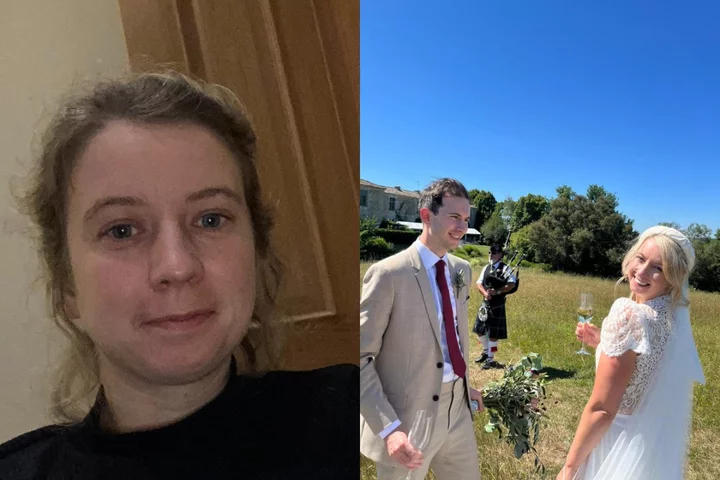
Woman reveals ‘crippling’ condition that almost called off her wedding
A woman who felt she was “trapped in this really dark world” due to her anxiety, causing her to have panic attacks, cancel her hen do, and feel she was “constantly on the verge of having a heart attack”, has said “therapy has allowed (her) to feel like (herself)” again and she has since gone on to marry her best friend who she met at school. Kirsty McKillop, 34, a strategist who lives in Walthamstow, London, said she had experienced anxiety “on and off” throughout her life, but it became all-consuming during the Covid pandemic – particularly after going through a redundancy process at her previous job in PR, which knocked her confidence and made her question her self-worth. She said she felt trapped in this “prison” that she had created in her mind and started “catastrophising” – she thought she would “lose everything in (her) life that she cared about”. “I felt like I was basically being crushed by the dark and being suffocated by it and I couldn’t get out,” she said. Kirsty decided to quit her job to look after her mental health, but then “everything went from bad to worse” as she started to experience debilitating physical symptoms. She would cry every day, vomit, experience heart palpitations, have panic attacks, feel agitated and extremely restless, and lie awake in bed until the morning. At her lowest point, Kirsty said she did not believe that she could get better, and she did not engage in “anything that might help her”. However, with the continued support of her now-husband, Liam, 34, family and friends, she began engaging in therapy from December 2021 – and gradually over time she could “physically feel (her anxiety) lifting”. She has since gone on to get married – something she previously did not think was possible – and go on her honeymoon to South Africa, and she now wishes to give the message that “life without anxiety is possible”. “No matter what level of anxiety you’re feeling, it isn’t something that you have to accept as part of life,” she said. “Whilst it is a natural human response, it’s not something you have to live with, and, going through therapy, it has just completely freed me from those feelings and I’m so much happier.” According to the charity Mind, anxiety is a natural human response when we feel that we are under threat; it can be experienced through our thoughts, feelings, and physical sensations. Kirsty had experienced anxiety at varying stages in her life, but during lockdown, when her job was at risk, her mind was “swamped” with negative and “obsessive” thoughts, with everyday places and situations becoming “bleak and scary and threatening”. While Kirsty did not lose her job, the redundancy process knocked her confidence, and her heightened emotions quickly spiralled into physical symptoms of anxiety. She felt she was in “this constant state of panic” and started “overthinking everything”. “I had really irrational thoughts that I was going to lose everything in my life that I cared about because I was not able to function day to day,” she said. “I think, eventually, it did turn into depression, and then I had quite intrusive thoughts around not wanting to wake up if I did get to sleep. “Not being able to sleep, not being able to eat, being sick, crying, feeling like I was having a heart attack, and feeling terrified of everything was really scary.” Kirsty would lie in bed and try to “disassociate” from her anxiety, but her intrusive thoughts just kept “swirling around in her head”. She then decided to quit her job in September 2021 “to give her the headspace” she felt she needed, but the lack of structure and routine in her life only made her anxiety worse. “It had taken over my head so much that I could not think rationally – everything was like, I’m worried about holding down a job, therefore, I’m not going to be able to pay the mortgage, therefore, I’m going to lose the house, therefore, I’m going to lose my husband and all my friends, and I’m going to end up with nothing,” she explained. “Despite having incredibly supportive friends who would come and just be with me for hours, I still had that fear.” Kirsty remembers a specific conversation where her parents and her then-fiance were discussing the wedding, and she thought: “This is ridiculous, there’s no way I’m going to get married in this state.” By this point, she had started losing consciousness during the day and blacking out, and she had to cancel her hen do. In November 2021, after moving back to her home town in Yorkshire, Kirsty’s family and friends encouraged her to seek professional support, as she was “stuck, trapped, in this completely different place”. Kirsty’s loved ones had looked after her throughout this period and previously suggested she seek help, but she was not willing to engage as she thought “it’s not going to make a difference”. She then started speaking to a therapist who was right for her in December 2021, and Kirsty said she was “pulled out of this horrible world”. Through having sessions once or twice a week, and with cognitive behavioural therapy (CBT), Kirsty said she felt she was “becoming much more rational” as she started to “challenge” her thoughts. The CBT focused on thinking about the facts, rather than “the feelings and the catastrophising” she had been experiencing, to try to “break the cycles of negative thinking”. She said: “When that feeling starts to lift, you think, I can get better, and I want to get better. “It’s not about fighting those thoughts, but accepting them and recognising they’re not facts.” By February 2022, Kirsty started to feel like herself again – she stopped being sick, no longer had panic attacks, and was able to sleep. In April, she started a new job as a strategist, which she now loves, and in July she married Liam and had “an amazing day”. Looking back now, Kirsty said she “dreads to think where she would have been” if she did not start having therapy, and she is beyond grateful for the support she has received from her family and friends. She does not want anyone else to go through the “absolute hell” she has, and wants to encourage more open dialogue and acceptance around mental health and anxiety, as she believes it “shouldn’t define you”. “Anxiety is a natural response, but when it gets to the point where you’re having intrusive thoughts, or it’s affecting you physically, or it’s stopping you from doing things, that’s when it’s not normal and you shouldn’t accept it,” Kirsty explained. “It’s not a state of well or unwell, it’s a state of always making sure you’re looking after yourself because life is always going to throw different challenges at you.” She added: “I enjoy life so much more without letting anxious thoughts spoil my day-to-day life… and therapy has just allowed me to feel like myself and enjoy being myself.” Kirsty is one of many who have offered quotes to inform and create a striking collection of AI art to shine a light on anxiety symptoms. The artwork, from the British Association for Counselling and Psychotherapy (BACP), has been installed outside London Waterloo – for more information, visit www.bacp.co.uk/anxietyis. Read More I was a child with mental health problems. Nothing excuses the way I was treated Mum suffered panic attacks for 30 years due to unusual phobia ‘I spent too much money on your wedding’: Musician calls out married friend for flirting with other women Charity boss speaks out over ‘traumatic’ encounter with royal aide Ukraine war’s heaviest fight rages in east - follow live
2023-05-23 19:49
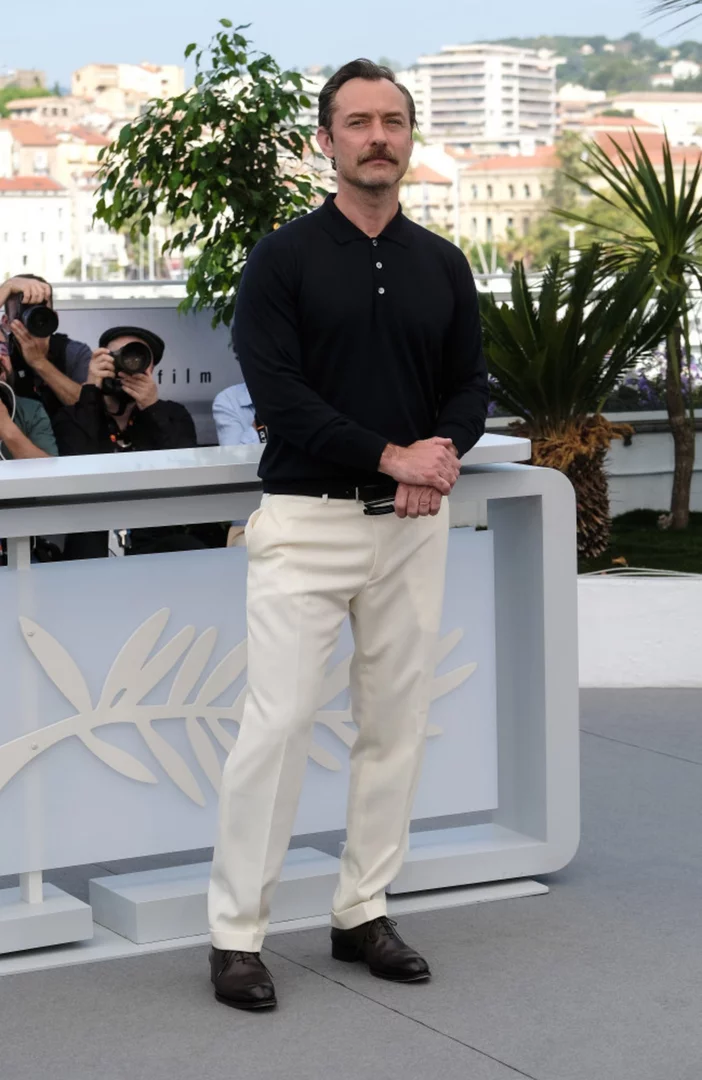
Jude Law wore 'blood and faecal matter' perfume on Firebrand set
Jude Law wore a perfume made of "blood, faecal matter and sweat" to capture Henry VIII's foul stench on the set of 'Firebrand'.
2023-05-23 19:17

Why an empty sand plot in Dubai sold for a record $34M
An undeveloped piece of luxury Jumeirah Bay Island is snapped up by an unknown buyer for 125 million dirhams -- a little over $34 million -- showing that demand for high-end vacation home real estate in the emirate remains high despite global economic turmoil.
2023-05-23 18:58
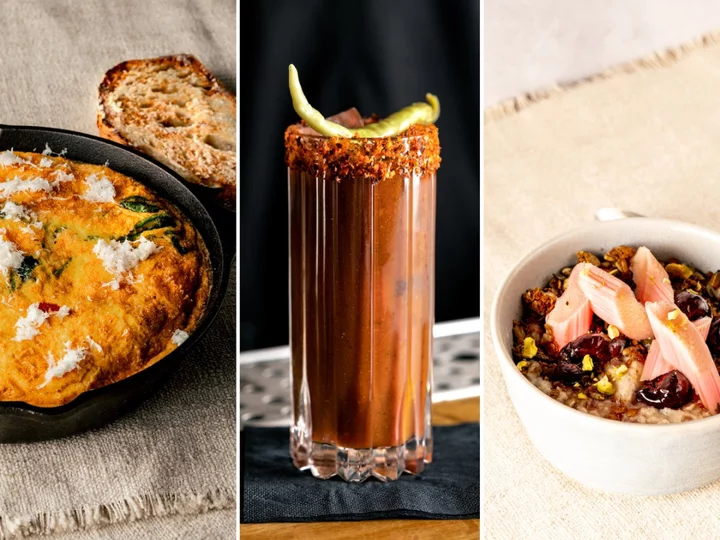
Banging brunch recipes worth getting out of bed for
No one likes mornings. Whether you’re having a slow start to the weekend, nursing a hangover or need a midweek pick-me-up, easing yourself in with an indulgent brunch is perfectly acceptable. You heard it here first. That’s why we asked Tasos Gaitanos and Alex Large, the old school friends behind London brunch institution Brother Marcus, for some flavoursome, summery recipes to get our days going. Celebrating vibrant Mediterranean cuisine, these recipes are worth getting out of bed for. Baked omelette and halloumi “Omelettes are an all-time favourite at Brother Marcus. We’ve given ours an Eastern Mediterranean touch by adding halloumi and baking it in the oven so it comes out golden in colour and light and fluffy in texture. This is best cooked in a skillet that can then be transferred to the oven for baking, but an ovenproof dish will also work.” Serves: 4 Ingredients: 30ml olive oil ½ a red pepper, diced 2 spring onions, chopped 100g spinach 12 eggs 230ml double cream 30g halloumi, grated Salt and freshly ground Black pepper Method: Preheat the oven to 200C fan. If using an ovenproof dish, place it in the oven to heat up. Heat the olive oil in a skillet, then add the red pepper and spring onion and saut. until softened. Add the spinach and season with salt and pepper, then saut. until wilted. Put to one side to cool. In a bowl, beat the eggs thoroughly with the double cream and a pinch of salt and pepper. Stir in the grated halloumi and the cooled veg mix. If using the ovenproof dish, take it out of the oven and quickly brush it with a little olive oil. While it’s still hot, pour in the egg/veg/halloumi mix and put it back into the oven. Alternatively, pour the mixture back into the skillet and return it to the oven. Bake for 10 minutes until the eggs are puffy and golden. Garnish with some more grated halloumi and serve with buttered toast. Rhubarb and cherry porridge “Early spring sees the arrival of the first forced rhubarb, and adding it to this porridge is a delicious way to enjoy it for breakfast.” Serves: 4 Ingredients: For the porridge: 200g oats 500ml whole milk 1 star anise Pinch of ground cinnamon Pinch of ground nutmeg For the rhubarb: 300g forced rhubarb 120g caster sugar 1 sprig of rosemary Juice of a ¼ lemon To serve: 4 tbsp maple granola 4 tbsp sweet preserves 4 tsp finely chopped pistachios Method: Place the oats in a pan with the milk, star anise, cinnamon, nutmeg and 500ml water and stir while slowly bringing the mixture to a boil. Stirring is the key to getting the perfect porridge consistency! Simmer for 5 minutes, stirring all the time, then take off the heat once it is thick. If you need to loosen it further just add a splash of water. Wash the rhubarb and trim the ends off, then slice it diagonally every 2cm to make diamond shapes. Bring a pan of water to the boil and drop the rhubarb into it, boil for a couple of minutes, until just tender, and drain. Place the blanched rhubarb back in the pan and add the sugar, rosemary, lemon juice and 230ml water. Bring to the boil and immediately take off the heat and cover – the idea here is to keep the rhubarb nice and firm while also dissolving the sugar in rhubarby juices. To serve, divide the warm porridge between four bowls and top each with a tablespoon of the granola and a tablespoon of the cherry spoon sweets and their syrup. Arrange some rhubarb pieces on top and pour over some of the juices, then scatter over some finely chopped pistachios. Brother Mary “The Brother Mary is our very popular twist on the classic Bloody Mary, using flavours from countries all around the Eastern Med: Egypt, Syria, Greece and Turkey. It’s a brunch essential.” Serves: 2 Ingredients: 300ml tomato juice 100ml vodka 60ml lemon juice 30ml Worcester sauce 10ml ouzo Pinch of molokhia leaf Pinch of cayenne pepper Pinch of celery salt To garnish (optional): 1 tbsp Aleppo chilli 1 lemon wedge 2 small Turkish green peppers 2 x 300-400ml glasses Ice Method: Take the large Boston shaker and measure in the tomato juice, vodka, lemon juice, Worcester sauce and ouzo. Add healthy pinches of molokhia, cayenne pepper and celery salt, then pour from the big Boston into the little Boston and repeat five or six times. This will break up the molokhia a little. Put the Aleppo chilli onto a small plate. Wet the rim of your glasses by sliding the lemon wedge round them, then dip or roll your lemony rims in the chilli on the plate. Fill the glasses with ice, then pour over the Brother Mary mix and pop a green Turkish pepper on top! Recipes from ‘Brunch with Brother Marcus’ by Tasos Gaitanos and Alex Large (Kitchen Press, £25).
2023-05-23 14:19
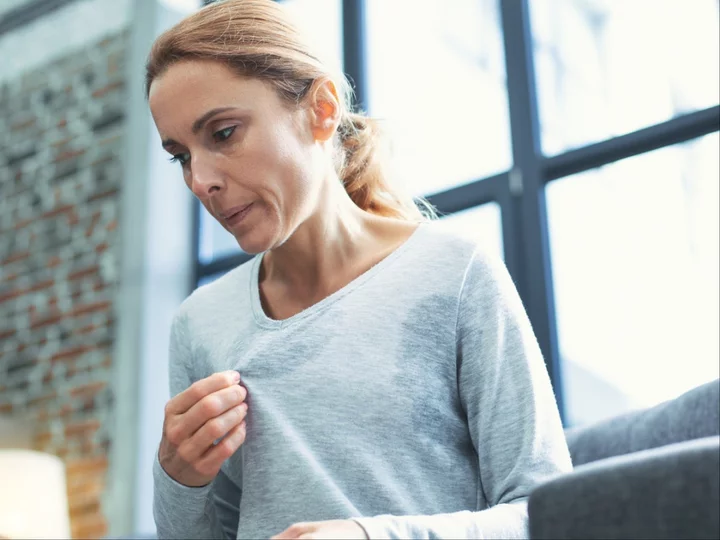
What is fezolinetant? The non-hormonal menopause treatment drug explained
The menopause treatment fezolinetant has been predicted as a “gamechanger” by experts for thousands of women who suffer from hot flushes. The drug, which is the first non-hormonal menopause treatment, was recently approved by America’s FDA. Experts are predicting it could be transformative for women for whom hormone replacement drugs (HRT) are not suitable. The drug was licensed in the US on 12 May and could be approved for use in the UK by the end of the year. According to a British Menopause Society survey, 79 per cent of women aged 45 to 65 experienced hot flushes as a result of their menopause transition, while 10 to 20 per cent describe the hot flushes as “near intolerable”. Here’s everything you need to know about fezolinetant: What is it used to treat? It works to target the menopause symptom of hot flushes. The drug that has been approved by the FDA is made by pharmaceutical company Astella, which advises patients to take one 45-milligram of its VEZOAH (fezolinetant) pill orally, once a day. A large clinical trial of fezolinetant published earlier this year revealed that, after 12 weeks of use, it reduced the frequency of hot flushes by about 60 per cent in women with moderate or severe symptoms, in comparison to a 45 per cent reduction in those who received a placebo. Women involved in the trial also said the drug reduced the severity of hot flushes and improved the quality of their sleep. How does it work? It works by blocking a brain protein called neurokinin-3, which plays a unique role in regulating body temperature in menopausal women. Respondents of the trial have said that the effects of the drug was experienced after taking the first tablet. By comparison, HRT, taken to alleviate menopausal symptoms, replaces the oestrogen that you lose during the menopause transition, either alone or in combination with a progestogen What are the side effects? According to the FDA, the most common side effects are abdominal pain, diarrhoea, insomnia, back pain, hot flush and elevated hepatic transaminases. What have experts said about it? “This is going to be a completely blockbuster drug,” said Prof Waljit Dhillo, an endocrinologist at Imperial College London who led a trial for the drug in 2017 toldThe Guardian. “It’s like a switch. Within a day or two the flushes go away. It’s unbelievable how well these drugs work. It’s going to be completely game changing for a lot of women.” Read More Adenomyosis: 5 things you need to know about the ‘evil twin sister’ of endometriosis ‘Suddenly, I saw Dad again’: The radical technology helping those living with dementia Naga Munchetty reveals womb condition adenomyosis: ‘I live every day on painkillers’
2023-05-22 21:29
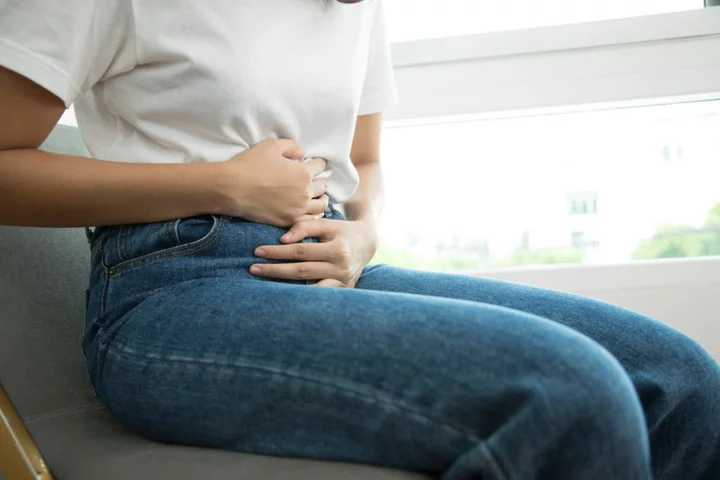
Adenomyosis: 5 things you need to know about the ‘evil twin sister’ of endometriosis
Despite increasing public awareness of endometriosis, with celebrity figureheads including Lena Dunham and Molly Mae, the condition’s ‘evil twin sister’, adenomyosis, remains neglected. While the NHS has an entire webpage which explains what endometriosis is, there is currently no equivalent for its sister condition. Read on for five things you should know. It’s not the same as endometriosis Both endometriosis and adenomyosis occur when the lining of the uterus (known as the endometrium) grows out of place, but there are major differences between the two. In endometriosis, the rogue tissue invades areas outside of the uterus. While the extent of the growth varies from patient to patient, it can affect areas such as the bladder, bowel, ovaries, and even the lungs. Adenomyosis, on the other hand, causes the rogue tissue to bury inside the muscular wall of the uterus. It’s possible to suffer from both conditions at the same time. Symptoms include bloating, heavy periods, and pelvic pain Thanks to the invasive endometrial growth, adenomyosis is characterised by an enlarged uterus. During menstruation, the embedded tissue swells and bleeds, typically causing a variety of symptoms (although some women are asymptomatic). According to a patient leaflet published by University College Hospital, sufferers commonly have painful and irregular periods, with more than half experiencing heavy bleeding. Chronic pre-menstrual pain, and feelings of heaviness and discomfort in the pelvis are among other possible symptoms. Less frequently, adenomyosis can cause bloating, pain during intercourse, and pain related to bowel movements. All symptoms should stop after the menopause. It affects 1 in 10 women The condition is believed to affect 10 per cent of women in the UK. That makes it just as prevalent as endometriosis, although it’s more common in women between the ages of 40-50, and those who have been pregnant before. While the cause of the condition is not known, UCH says that “genetics and some hormones may play a role”. In terms of long-term effects, the North Bristol NHS trust says that adenomyosis does not appear to decrease the chance of pregnancy, however it has been linked to an increased risk of miscarriage and premature birth. Treatment options are limited For women with mild symptoms, trying to get pregnant, or nearing menopause, the North Bristol trust says that treatment may not be necessary, but for those seeking relief from symptoms, it recommends medication to reduce pain and bleeding, and hormonal interventions such as the contraceptive pill. The only “cure” is a surgical procedure involving the removal of the womb (hysterectomy), although this is a last resort intervention. The Bristol-based trust also offers an alternative surgery which involves blocking the blood supply to the endometrial growth, forcing it to shrink, but neither procedure is advisable for women who want to get pregnant in the future. It can take years to diagnose The condition is typically diagnosed using MRI and ultrasound scans, but the NHS says that adenomyosis can take “a long time, even years, to diagnose” because “symptoms and severity can vary between women”. The frequent dismissal of women’s gynaecological symptoms means that signs of adenomyosis may be conflated with ‘normal’ menstruation, or even other conditions such as endometriosis. Anecdotal reports of sufferers suggest that misdiagnosis is common. Gabrielle Union, one of the only celebrities to have publicly identified as having the condition, suspects her condition went undiagnosed for years. Speaking at a conference in 2019, Union explained: “The gag is I had [adenomyosis] in my early twenties, and instead of someone diagnosing me they were like ‘Oh you have periods that last nine or 10 days and you’re bleeding through overnight pads? Not a mere inconvenience... perhaps there’s something more there.’” Earlier this year, the charity Tommy’s reported that the condition might be “underdiagnosed” after a review of existing studies found that “mild” cases could be missed by clinicians using current diagnostic methods. “There should be training for clinicians and sonographers to diagnose adenomyosis using a standardised criteria,” said Dr Ishita Mishra, leader of the review. “Being able to identify this condition using a uniform set of criteria would then help give us a true picture of the numbers affected, and better understanding of the impact of this condition,” Mishra explained. If you have any health concerns, you should always contact your GP in the first instance. There is also information available via NHS Scotland or Endometriosis UK. Read More Lena Dunham marks five years of sobriety: ‘Happiest of my time on earth’ ‘Some days things just do not work’: What happens when your smear test doesn’t go smoothly? Woman’s warning after terminal cancer mistaken for heavy periods 5 things you need to know about adenomyosis, the ‘evil twin sister’ of endometriosis Woman’s warning after lip filler left her unable to close mouth ‘Suddenly, I saw Dad again’: The radical tech helping those living with dementia
2023-05-22 19:45
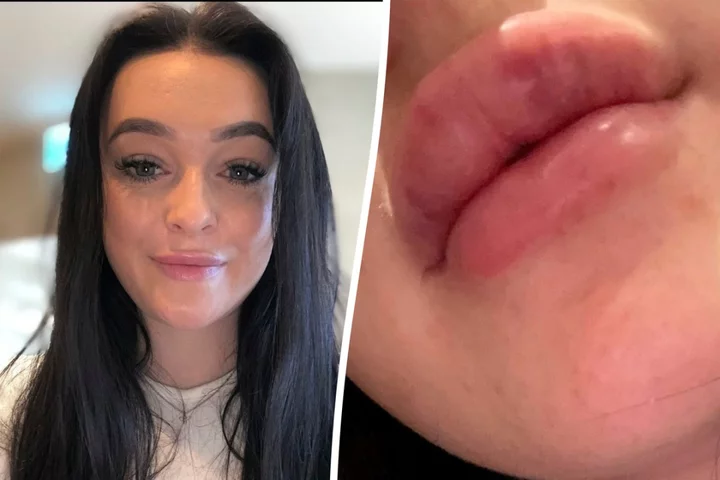
Woman’s warning after lip filler left her unable to close mouth
A woman horrified after lip filler left her unable to close her mouth has urged others to “do their research” before getting cosmetic surgery. Harriet Green, 23, wanted plumper lips after being influenced by videos on TikTok and influencers from Love Island, and went to a salon to get 1.1ml of filler in December 2022. Immediately after the procedure, which entailed a substance being injected into her face, Harriet’s lips started to swell up and bruise but she claims she was assured it was normal and they would go down within weeks. But three months later, her lips were still swollen and Harriet claims she was left with two painful lumps in her lips and unable to properly close her mouth. Harriet had to undergo three corrective procedures, costing £700 in total, to get her lips back to normal. Harriet, a council worker, from Acle, Norfolk, said: “This was the first time I had anything done. “On the way to my appointment, the woman at the salon told me to numb my own lips which now I realise you should not do. “When I was getting my lips done, it was painful but at that time I didn’t realise it is only painful when not done correctly. “Straight after they were very sore and started to bruise. “After all the bruising had gone, I had two hard lumps on my lip - one on the left and one on the right. “It made me feel so much more self-conscious - it was painful and uncomfortable.” Harriet got her lips done in December 2022 and paid £100 for 1.1ml of filler. After the procedure, Harriet thanked the aesthetics practitioner and headed home but started experiencing swelling and bruising on her lips - which she originally thought was standard. Harriet said: “I was assured that the bruising was normal, and it would go down. “But, after all the swelling and bruising had gone, I was left with two hard lumps. “I stopped going to the woman as I was annoyed, and people close to me started commenting on how my lips didn’t look good. “They said they could see unevenness in my lips and could see two lumps on the top tip. “I’d wake up in the mornings and my lips would be swollen.” Harriet found Dr Raja - a GP who runs her own aesthetics clinic in Norwich and underwent three corrective procedures - used to tissue to dissolve any hyaluronic acid-based filler - costing £700. Harriet said: “I had to get my lips dissolved three times as too much filler was put in and it was injected into the wrong place. “I had to go back three times before she could add new filler to my lips. “I have been lucky, don’t get me wrong, I still have lumps in my mouth, but people have had it a lot worse. “After getting my lips done it made me feel so much more self-conscious, it is painful and uncomfortable. “But now you can’t even tell I have had them done as I have had them done properly.” Originally, Harriet was injected with 1.1 mil and Dr Raja inserted 0.6 mil into her lips the second time around. Harriet said the world of cosmetic surgery is a “minefield” and it has put her off any cosmetic procedure for life. She said: “It is so common nowadays. “I don’t judge people - when you have never had anything done before, you don’t know what you should be looking out for. “Looking for what should go wrong and what should go right. “It is important to research the person, don’t just go off social media pictures like I did. “Look for healed pictures of someone’s lips, not just fresh off the needle as they will look nice and plump straight after.” Harriet believes that social media and reality shows like Love Island play a major role in people wanting to get cosmetic procedures. She said: “I won’t have anything done to my face now, at one point my TikTok was full of jaw filler and Botox which swayed me into wanting to get it done. “It seems like such a normal thing to do now - that is the problem. “Shows like Love Island, all the girls on there have had something done to enhance their look which is not natural. “You don’t really ever see anyone there who is ‘natural’ and not had something done. “It feels more common and appealing to others that if you have filler and botox you are seen as more attractive.” Read More Woman defends picking up ‘$8k’ sofa from New York street Couple with 37-year age gap who met when he was 15 have hopes dashed Eamonn Holmes makes startling claim about Phillip Schofield’s ‘nonsense’ This Morning statement
2023-05-22 18:56

Ireland to introduce alcohol label health warning
The labels, which come into force in 2026, will contain health warnings and a calorie count.
2023-05-22 17:56
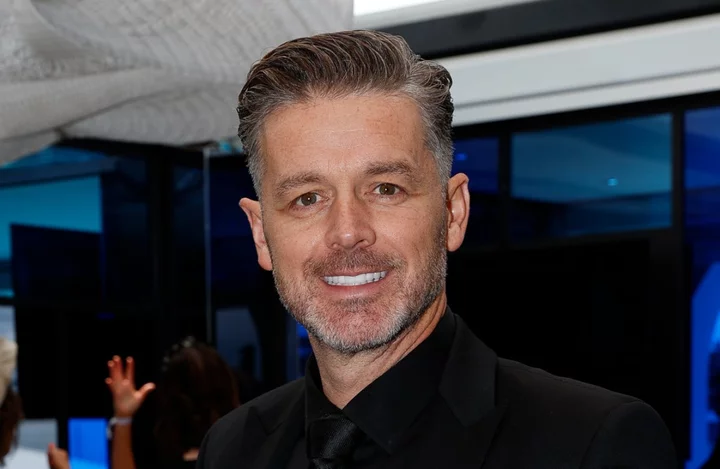
MasterChef judge Jock Zonfrillo’s daughter speaks out for first time since his death
Ava Zonfrillo, the eldest daughter ofMasterChef Australia judge Jock Zonfrillo, has spoken out for the first time since his unexpected death on 30 April. The celebrity chef died suddenly at the age of 46. His death was confirmed by Network 10 on 1 May, as well as by his family, who shared a statement. Posting a series of photographs and videos of her father, Ava wrote on Instagram: “Still can’t accept that we’ll be remembering you for more time than we had you, but doesn’t mean we’ll love you any less.” The 22-year-old added: “I love you dad, always.” Her poignant post included a photograph of her as a toddler with Zonfrillo, with both wearing comedy glasses with thick black eyebrows and large plastic noses attached. Other more recent photos show her posing with her father at various events. Ava also shared two clips of Zonfrillo, with one of him blowing a kiss at the camera. Friends of the family sent Ava love and well wishes in the comments. Chef Alex Prichard wrote: “We are all here for you! Love you both.” Meanwhile, Australian designer Collette Dinnigan sent “so much love” to Ava and wine expert Samantha Payne said: “Love you dearly and will be giving you the biggest of hugs soon, my darling friend. We’ve got you.” Zonfrillo was laid to rest at a private funeral two weeks ago. The service was attended by his wife, Lauren Fried, and their four children. A select group of family and friends, some who flew to Sydney from other countries, were also in attendance. During the service, Fried said in her eulogy: “We were two halves that found each other at the exact moment in life when we were ready. “We were ready for that big love to live a life of adventure, to become parents together, to imagine extraordinary things and to actually make them happen.” The late chef, who was born in Glasgow, was found at a hotel in Melbourne on Lygon Street the day before the 2023 season of MasterChef was set to be aired. The show was postponed following news of Zonfrillo’s passing. According to Daily Mail Australia, police believe that Zonfrillo died of natural causes and nothing unusual or suspicious was discovered in the hotel room where he was found. As news of his sudden passing broke, many in the food industry paid tribute to Zonfrillo, including Jamie Oliver, Gordon Ramsay and Marco Pierre White. Pierre White praised his former apprentice chef and said: “Very few chefs have an inquisitive mind, an intellectual mind and a creative mind. That’s what makes him special, that’s what makes him rare.” Read More Jamie Oliver and Gordon Ramsay pay tribute to chef Jock Zonfrillo MasterChef Australia to return with ‘full support’ of Jock Zonfrillo’s family following his death Jamie Oliver shared selfie with late MasterChef Australia judge Jock Zonfrillo hours before his death
2023-05-22 15:23

‘Suddenly, I saw Dad again’: The radical technology helping those living with dementia
There is a scene in the 2020 film The Father, starring Anthony Hopkins and Olivia Colman, that is all too familiar for people caring for someone with dementia. In it, Hopkins’ character Anthony struggles to keep up with his daughter Anne’s (Colman) movements. One moment, she is bringing home dinner. The next, she is talking about moving to Paris with a boyfriend he doesn’t like. She’s in his flat. Suddenly, he’s in her flat. Her face shifts – she looks like someone he used to know, then a total stranger. Where is he? When is he? Dementia is a cruel sickness that radiates outwards, seeping into the lives of anyone in its orbit. Patients become lost in a maze of memories. The present day becomes too slippery to hold on to, so many retreat into themselves. Wayfinding – meaning the ability to find one’s way in the world – becomes severely impaired, resulting in anxiety, confusion, and distress that can be very difficult for families and carers to cope with. There is no cure for dementia, and most medical research is focused on finding treatments for diseases that cause dementia, such as Alzheimer’s disease and dementia with Lewy bodies. It’s extremely important work, but there’s also a need for tools that can help those living with dementia as well as their families and carers. As research shows that visual cues can help deliver much-needed aid and relief, a number of small creative companies are stepping in to fill in the gap. Sarah Harrison is the founder of Recognii, the world’s first entertainment DVD made especially for people with moderate to later-stage dementia. The idea for Recognii came about after Harrison began taking care of her father when he was diagnosed with Alzheimer’s in 2015. She and her mother, a former nurse, opted to care for him in their family home in Harrogate, where Sarah also resides. “As the condition progressed, he became very withdrawn,” she recalls. “He couldn’t watch TV or engage himself in his own activities, couldn’t really have a conversation, couldn’t read books anymore because he couldn’t follow the plot.” But amid all the gloom cast by the disease, there’d be breakthrough moments when Sarah saw her father as she always knew him. These moments often came when he watched children’s TV, as the faces of smiling, happy children and brightly coloured graphics grabbed his attention. “It was great, but it was also too childish and didn’t reflect his life,” Sarah says. “I thought, surely there must be something out there that is more simplistic viewing that does reflect adult experiences – but there was absolutely nothing.” An idea began to form. Sarah thought that if she could create engaging short clips of “gentle, joyful stuff” with no storylines, it would bring him some relief from the fog in his mind. “He responded to very bright colours and contrasts, and two-dimensional images, which reflected what we know about the way dementia impacts cognitive and visual processing.” Changes in visual perception occur when the sensory journey between the brain and organs (such as the eyes and ears) gets interrupted, or slows down due to dementia. According to Alzheimer’s UK, the disease can also lead to damage to the eyes or parts of the brain, which can then lead to misperceptions, misidentifications, hallucinations, delusions and time-shifting. Like Anthony’s experience in The Father, time becomes an amorphous thing, which jumps back and forth instead of moving in a linear fashion. As such, older memories can become safer places for dementia patients to revisit. I noticed the iPad gathering dust. She said it wasn’t easy for her to use and she missed getting letters and postcards like she did in the past Famileo, a company that creates “family newspapers” for elderly people – many with dementia – works with families of patients to create personalised hard-copy newspapers that utilise “reminiscence therapy” to help soothe and comfort. “Typically, people with dementia are more likely to remember long-term memories,” explains Tanguy De Gelis, a co-founder of the company. “Famileo includes old photographs of themselves and the family, which stimulates their memory and helps them remember people as they were.” Each photograph included in the newspapers is accompanied by text that helps provide context, so that the reader can easily identify who they’re looking at, as well as their own place in the family in relation to the people in the picture. “Managers and activity coordinators at care homes often tell us that a person’s dementia journey is not linear, that symptoms come and go,” De Gelis continues. “The consistency and reliability of these personalised newspapers allows it to be appreciated even more on the ‘good days’ patients have. It can be very hard for family members to think of things to talk about with an older relative, but the newspaper can be a conversation starter and provide a visual guide for both sides.” Having a physical newspaper is also a boon for many elderly people who struggle with smartphones, tablets and laptops. For De Gelis, it was his grandmother who inspired the idea for Famileo. “I bought my grandma an iPad as a Christmas present so she could keep in touch with the family through our WhatsApp group,” he recalls. “But one day I went to visit her and I noticed the iPad gathering dust. She said it wasn’t easy for her to use and she missed getting letters and postcards like she did in the past.” The slow pace in developing tools for coping with dementia is down to a lack of understanding about the disease, says Dr Emilia Molimpakis, CEO and co-founder of Thymia. For years, patients languished in care homes, their minds deteriorating as families watched on helplessly. “Unfortunately, up until recently, pinpointing clear signs of Alzheimer’s disease relied on invasive and/or expensive medical tests and these often don’t show clear results until the disease has progressed substantially.” But recent developments in medical treatments and in the field of artificial intelligence (AI) have shifted things. Dr Molimpakis’ platform involves building AI-powered tools to improve the speed, accuracy and objectivity of dementia diagnoses. Thymia also uses video game-style activities to test for symptoms of cognitive disorders, she says, such as major depression, anxiety and dementia. “Each game is built around one or more cognitive tests, the results of which show tell-tale signs of symptoms, such as fatigue issues, memory impairment, concentration difficulties and more,” she explains. It does so by using software that analyses “biomarkers” of disease while players complete the activities across three key data streams: voice, video and behavioural measures. By analysing how someone speaks or what facial micro-expressions they make, Thymia’s work-in-progress models have identified symptoms in major depressive disorders with more than 90 per cent accuracy, Dr Molimpakis says. Major improvements in healthcare mean that people are living longer – but in a cruel twist of fate, this means that dementia is becoming ever more prevalent. There are currently more than 55 million people living with dementia globally, and according to Alzheimer’s Disease International, this figure is expected to balloon to 78 million in 2030 and 139 million in 2050. While scientists are working on earlier diagnosis and treatment, the need for coping mechanisms for living with the disease is growing. Harrison remembers how her father would react when she showed him the clips she created. He passed away before the final version of Recognii’s DVD could be launched. “It’s like the clouds would part, just for a few seconds,” she recalls. “Suddenly, I saw Dad again. The moments when you get a glimpse of who they used to be are so precious, because as the disease progresses, you do feel like you are losing them. So having made something that helps bring them back, even temporarily – it’s like a gift.” Read More A One Direction fan claimed she had a brain tumour. Five years after her death, we still need answers ‘Death acceptance brings peace’: Are death doulas the cure for our fear of the end? ‘You always feel like you’ve done something wrong’: Why UK surrogacy laws need a ‘real overhaul’ Jason Manford comforted by fans after announcing death of family member Grandmother praised for refusing to babysit daughter’s newborn for free 7 tips and tricks for hay fever relief
2023-05-22 14:22
